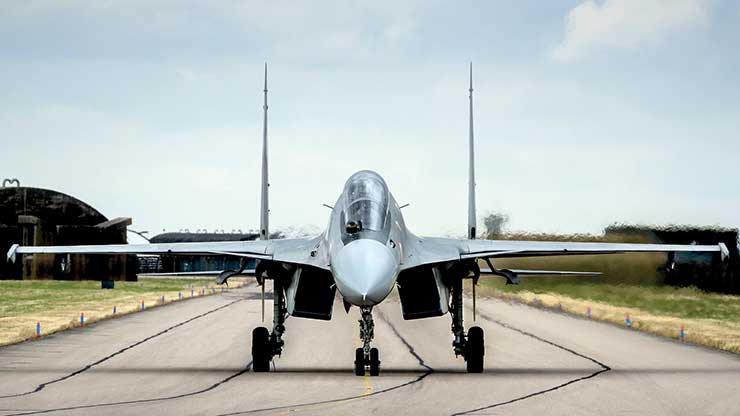
The formidable Sukhoi Su-30 MKI has been in service with the Indian Air Force (IAF) for nearly 20 years and needs a major upgrade to remain relevant to future air warfare. Codenamed Flanker by NATO when it was first introduced as the Su-27 in Russia in 1985, the warplane entered service with the IAF in 2002. Currently, India has nearly 260 Sukhois – an impressive number for such a high-end and expensive weapons platform. With its induction, the IAF has not only made a huge technological transition from a MiG-21 dominated fleet, its war fighting doctrine has also changed, focusing on long-range and strategic missions. It also shows a keen sense of judgement by the IAF, which realises that 100% fleet utilisation is impossible – it is around 60% – and having a large number of air superiority aircraft around is the key to getting the job done.
However, as the mainstay of the IAF’s fighter fleet, the Su-30 needs a major makeover to keep in step with changes in air combat. For the past decade, India and Russia have been circling around a $8-billion deal to upgrade its Sukhoi fleet to near fifth-generation level. The upgraded version would be renamed Super Sukhoi, which will have improved radar, avionics, weapons and an electronic warfare (EW) suite. However, modernising such a large aircraft with multiple offensive and defensive systems would cost nearly as much as a new fighter. In this backdrop, the IAF has decided to proceed in phases, and the most urgent upgrades would be taken up in the first phase.
Impetus For The Upgrade
In 2002, the same year that India acquired the Su-30, British fighter pilot John Farlight saw Victor Pugachev turn his Flanker 360 degrees in 10 seconds at the Paris Air Show. In an interview to Russia’s Nauka I Zhisn (Science & Life) magazine he said: “What the Russians have achieved has astonished us to the bottom of our souls.”
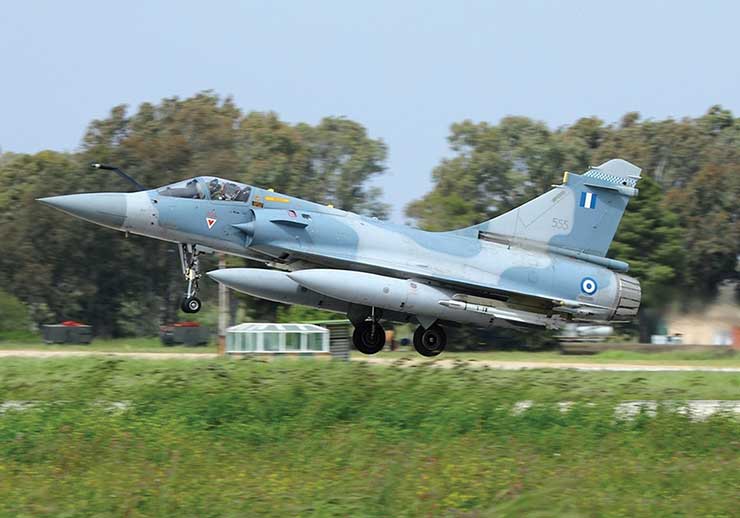
Developed to counter the American F-15 Eagle, the Sukhoi achieved much more, becoming a dogfight duke that ran the competition into the ground. With its un-refuelled range of 3,200 km, ability to fly 2.35 times the speed of sound, and astounding agility – despite its 30 ton weight – the Flanker wowed the world’s aviation experts. Said Farlight: “When you see there are no limits for a Su-27 or that the aircraft can go vertical, stop, slide down and then resume normal flight and perform this not once, not twice but time after time, you realise this is not an exception, not a trick, but a standard.”
However, no aircraft can continue to rule the skies forever and the Flanker is no exception. The IAF’s inability to upgrade the aircraft has clearly impacted its effectiveness as was clearly demonstrated during the aerial combat that took place the day after India’s Mirage-2000 fighter-bombers raided Balakot, deep in Pakistan’s Khyber-Pakhtunkhwa.
To save face and avoid complete humiliation, Pakistan responded with “Operation Swift Retort” the following day. The PAF offensive comprised nearly 24 aircraft, including F-16 and JF-17 fighters armed with beyond visual range air to air missiles (BVRAAMs). However, despite their numerical superiority and the longer-range missiles, the Pakistani raiders were neutralised by a handful of IAF Su-30MKIs, Mirage-2000s and MiG-21 interceptors. India also shot down an F-16 while losing a single MiG-21 in the dogfight. The Sukhois were at the centre of this air battle, neutralising the powerful American made AMRAAM missiles fired by the F-16s at the Indian fighters.
But despite the powerful Sukhois providing combat air patrol, the outcome of the dogfight was not entirely satisfactory. Group Captain (Retd) Anurag Sharma, former Director Operations (Air Defence) explains in a report for the Manohar Parrikar Institute for Defence Studies and Analyses: “Had the Su-30MKIs that engaged in combat with the PAF’s American-made F-16s and the Chinese made JF-17s been equipped with a superior BVRAAM and an upgraded EW suite, the kill ratios may have been even more favourable. In such a case, the IAF could have caused higher attrition on the raiders. Furthermore, instead of seeing a courageous pilot paraded as a prisoner of war, India may have held the bargaining chips at the negotiating table. It was not so much because of delayed induction of the Rafale, but perhaps a consequence of delayed upgradation of the existing fighter fleets, principally the Su-30MKI.”
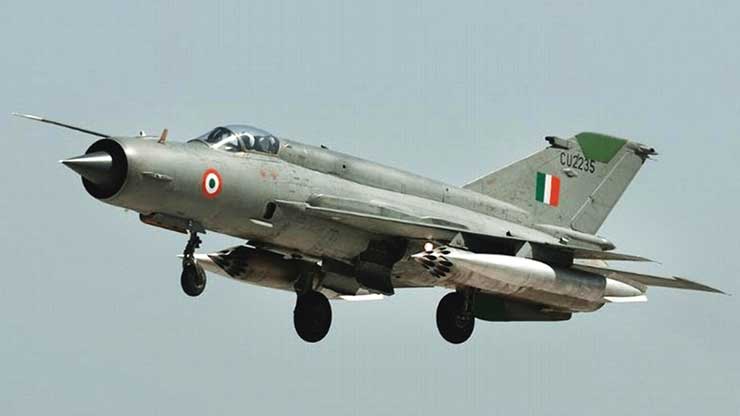
“Had the Su-30MKIs that engaged in combat with the PAF’s American-made F-16s and the Chinese-made JF-17s been equipped with a superior BVRAAM and an upgraded EW suite… the IAF could have caused higher attrition on the raiders…”
According to Sharma, the upgrade programme for the Sukhoi fleet was initiated about a decade ago and it was to be timed with the first overhaul stage of the aircraft. “However, many aircraft have already been overhauled but there has been little progress on the upgrade programme thus far. The responsibility can perhaps be deflected between the Russian original equipment manufacturer for demanding exorbitant prices and withholding technology, HAL (the Indian manufacturer) and DRDO for delayed projects, the ministry concerned for inordinate delays in clearing projects, and the IAF itself for not aggressively pursuing these issues. The bottom line is that the equipment/ capability that directly dictates operational readiness cannot be compromised and it is the IAF that has to draw the line.”
Urgent Upgrade Areas
The Sukhoi is an extremely large aircraft (almost twice as massive as the F-16 or Rafale) making it a versatile platform for adding all sorts of avionics, radars, weapons and defensive systems. This has allowed HAL to incorporate indigenous avionics and the BRAHMOS missile alongside French and Israeli sub-systems and weaponry. Currently, the most important areas requiring upgrades are:
Engine: According to a 2014 CAG report, the Su-30MKI had an operational availability of just 55%. This means 45% of the IAF’s Flanker fleet is in maintenance, repair and overhaul (MRO). Maintenance is the easy part and usually means inspecting the aircraft after each flight; repair means fixing any damaged parts; and overhaul could involve taking out the engine for major maintenance. The Su-30 MKI’s Achilles Heel is its AL-31 engine that needs to be overhauled more often than any comparative Western engine. The IAF’s aim is to achieve 75% operational availability. This could mean upgrading to the more advanced AL-41 engine, but the Russians are going to demand a king’s ransom for this power plant.
Radar: The Sukhoi has the passive electronically scanned array (PESA) radar while most current warplanes are equipped with active electronically scanned array (AESA) radars. The major difference between the two is the number of transmitters. A PESA system relies on one large transmitter while AESA systems have multiple transmitters. This allows for greater reliability, smaller size and weight and a lower threat of being detected due to the use of multiple frequencies. In order for the Sukhoi to be able to track modern missiles while the Flanker itself remains undetected, the existing Russian-made BARS PESA radar needs to be replaced. The Uttam AESA radar being developed for the Tejas fighter is being pitched as a replacement. However, the Uttam is comparatively less powerful and meant for small and medium fighters. Whether it can be upscaled for the Sukhoi’s massive radome is to be seen. The other alternatives are the Irbis-E PESA radar (which is twice as powerful as the BARS) or the Zhuk AESA.
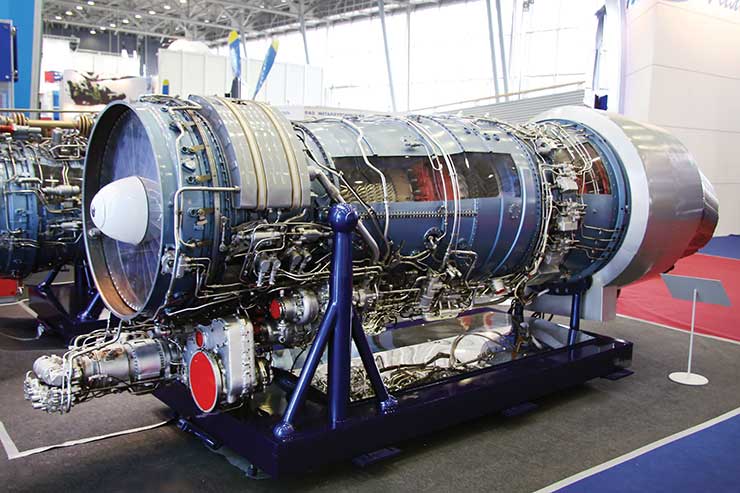
IRST: The Infrared Search & Track uses infrared search and track technology to detect and track heat coming off the engines of enemy aircraft. What makes it unique is its passive nature – meaning it can act without emitting any radiation of its own. The system offers a fighter both an extra set of medium-range eyes and a stealthy air-to-air combat weapon. The Defence Acquisition Council has accorded approval for undertaking design and development of Long Range Dual Band IRST for SU-30 MKI aircraft under the Make II sub-category. The system, which is being developed by Bharat Electronics, will be able to operate in day and night conditions and help the Sukhoi detect stealth aircraft like the Lockheed F-35 and Chengdu J-20, which are made up of radar-absorbing materials.
Air to Air Missiles: In the 1999 Kargil War, it was the MiG-29’s 30-km range air-to-air missiles that kept the Pakistan Air Force’s F-16s away from the battle zone while the Indian Army pounded the Pakistani troop concentrations in Kargil and Skardu. However, Balakot showed that the IAF had ceded the advantage to the F-16. With that in mind, the IAF is acquiring the 110-km range Astra Mark 1 beyond visual range missile that will replace the Sukhoi’s R-77 and R-27 missiles. India is currently testing the Astra Mark 2, which will be capable of taking down enemy aircraft from a range of 160 km. Also planned is the 350-km range Mark 3.
Digital Flight Control Computer: HAL will be replacing the mission computer with a more powerful Digital Flight Control Computer.
End Game
The IAF’s gameplan for the Sukhoi seems to be an incremental rather than a full-on upgrade. While funds are a significant factor, there is also the belief that the incremental approach offers space and time for indigenisation. Developing Indian systems is no doubt a better policy because even if they are a notch below Russian analogues, there is the assurance of hassle-free supplies. Moscow’s after-sales unreliability is a key reason why the Indian armed forces have been gradually moving away from Russian weapons.
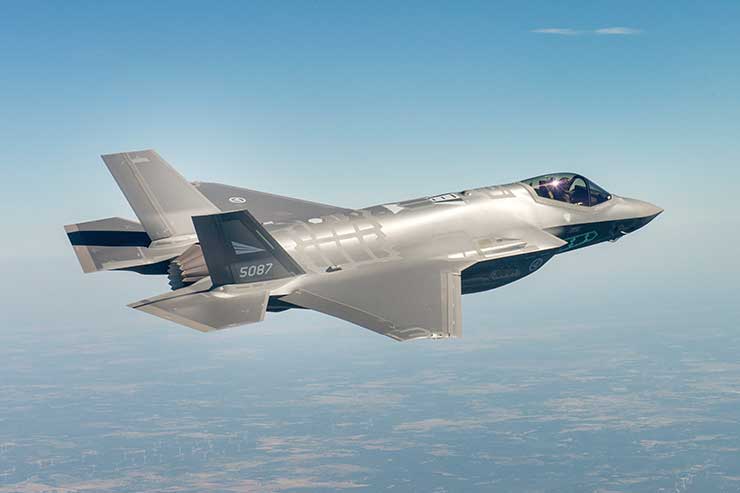
However, while going for indigenous weapons, India’s defence brass must not lose sight of the fact that the Sukhoi’s versatility – owing to its extended range, speed, firepower and legendary super-manoeuvrability – has given the IAF considerable leeway in deploying the aircraft in multiple missions. The primary lesson from Balakot and the dogfight that followed is that air superiority is a precious advantage that should not be frittered away. The Sukhoi performs best in the air dominance role, providing combat air patrol for other fighters to attack the enemy with impunity. There are not many fighters in the world that can track and destroy an incoming air-to-air missile. The right approach would be to arm the Flanker with the most powerful weapons systems the IAF can afford. Suboptimal or outdated systems would only lead to the aerial equivalent of a Mexican stand-off with the adversary. That’s not what the Sukhoi was built for.
–The writer is a globally cited defence analyst. His work has been published by leading think tanks, and quoted extensively in books on diplomacy, counter terrorism, warfare and economic development. The views expressed are personal and do not necessarily reflect the views of Raksha Anirveda








